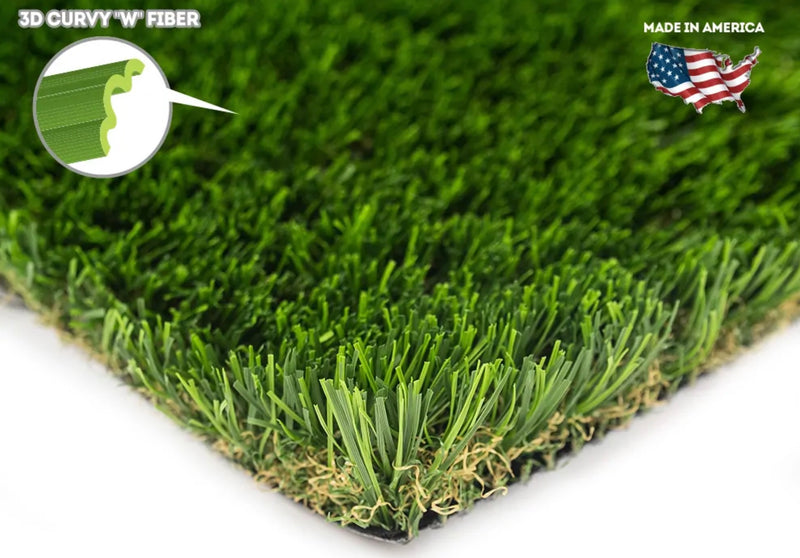Expert Arizona Turf Providers Offering a Natural-Looking Lawn Alternative
Wiki Article
Explore the Environmental Advantages of Opting for Synthetic Grass Solutions
The fostering of synthetic grass solutions provides an engaging possibility to address pressing environmental difficulties. By considerably minimizing water usage and lessening the application of damaging chemicals, these choices not just advertise lasting landscape design however likewise secure local communities.Water Preservation Conveniences
One of the most considerable advantages of synthetic turf is its ability to save water. In contrast, artificial turf does not need watering, significantly minimizing the general demand for water resources.By removing the requirement for regular watering, synthetic grass adds to sustainable landscape methods and assists mitigate the environmental effect of excessive water usage. Furthermore, the conservation of water encompasses the reduction of runoff, which can lead to soil erosion and river pollution.
Additionally, the setup of synthetic grass enables municipalities and home owners to assign water sources a lot more effectively, focusing on crucial usages such as drinking water and agriculture. The change towards man-made grass not just promotes responsible water usage but also straightens with broader ecological objectives targeted at protecting natural deposits.
As communities increasingly focus on sustainability, the water preservation advantages of synthetic grass provide a compelling case for its fostering in industrial and residential landscaping tasks.
Lowered Chemical Use
The shift to synthetic turf considerably decreases the dependence on chemical treatments typically utilized in natural yard upkeep. Traditional turf management usually includes the application of fertilizers, herbicides, and pesticides to advertise development and control insects. These chemicals can pose threats to human health, local wildlife, and the atmosphere, adding to soil and water contamination.In comparison, synthetic lawn eliminates the demand for these damaging substances. When mounted, it needs marginal upkeep, mostly consisting of routine cleansing and occasional infill replenishment. This decrease in chemical usage not just profits the immediate atmosphere but likewise adds to more comprehensive environmental security. By minimizing the release of artificial compounds into the ecosystem, synthetic grass advertises healthier soil and water systems.
Furthermore, the lack of chemical drainage connected with synthetic grass installations helps shield neighborhood rivers from air pollution, sustaining marine life and keeping biodiversity. Turf installation phoenix az. As communities increasingly prioritize lasting techniques, going with synthetic grass offers a viable service that aligns with ecological preservation goals. Through this change, residential property proprietors can delight in rich green rooms without endangering environmental health, leading the method for a more sustainable future
Reduced Carbon Impact

Furthermore, the setup of synthetic grass can lead to considerable water conservation. All-natural yards require substantial amounts of water for irrigation, which not only contributes to the carbon impact related to water removal and therapy but additionally additional hints strains regional water sources. In comparison, synthetic grass requires marginal upkeep, calling for no watering, thereby substantially reducing water usage and its associated energy costs.
Furthermore, the long life of synthetic grass adds to its lower carbon influence. With a life-span of approximately 15 years or even more, the demand for constant substitutes is lessened, causing much less waste and reduced power intake in production and getting rid of standard yard choices. On the whole, synthetic grass presents a lasting alternative for eco conscious landscaping.
Habitat Conservation
Habitat preservation is a vital factor to consider in the debate over landscaping options, specifically when comparing synthetic turf to all-natural turf. All-natural click here now grass lawns usually need extensive upkeep, including the use of herbicides, plant foods, and pesticides, which can adversely influence local communities. These chemicals can seep right into the soil and rivers, hurting indigenous vegetation and animals and disrupting local habitats.
Synthetic turf removes the requirement for hazardous chemicals, thereby shielding close-by wild animals and keeping the integrity of bordering ecosystems. The setup of fabricated turf can lead to the conversion of previous grass locations right into more biodiverse landscapes, such as pollinator yards or native plant areas, which can support neighborhood wildlife.
Eventually, the transition to synthetic grass not only preserves water and minimizes upkeep efforts yet also cultivates an extra unified relationship between human tasks and the natural surroundings, advertising habitat preservation while doing so.
Long-Term Sustainability
Long-term sustainability is a crucial consider examining the advantages of synthetic grass over conventional yard yards. One of one of the most significant advantages of artificial grass is its durability; it can last approximately 15-20 years with very little maintenance, whereas natural turf calls for regular reseeding and replacement. This durability decreases the need for continuous resources, such as water, fertilizers, and chemicals, which are crucial for maintaining a healthy and balanced grass yard.In addition, synthetic grass adds to a decrease in carbon discharges connected with yard care tools. Traditional yards usually require gas-powered mowers, trimmers, and blowers, all of which add to air contamination. Arizona artificial turf. On the other hand, synthetic grass gets rid of the requirement for such equipment, advertising a cleaner atmosphere
Moreover, the manufacturing of fabricated lawn significantly makes use of recycled materials, enhancing its see here sustainability profile. As producers adopt eco-friendly methods, the environmental impact of synthetic grass proceeds to reduce.

Final Thought
The fostering of synthetic lawn options offers significant ecological advantages, including substantial water preservation, lowered dependence on dangerous chemicals, and a lower carbon impact. Additionally, artificial turf help in preserving all-natural habitats by decreasing land disruption and promoting long-term sustainability with the usage of resilient materials. Collectively, these factors highlight the potential of man-made grass to contribute positively to ecological health and provide a viable option to traditional landscape design practices in a progressively resource-conscious world.In contrast, fabricated turf does not require watering, substantially decreasing the overall need for water resources. By decreasing the release of artificial compounds into the ecosystem, fabricated turf promotes healthier soil and water systems.
In addition, the setup of fabricated turf can result in considerable water conservation. In contrast, man-made grass requires marginal upkeep, calling for no watering, therefore considerably minimizing water usage and its linked energy prices.

Report this wiki page